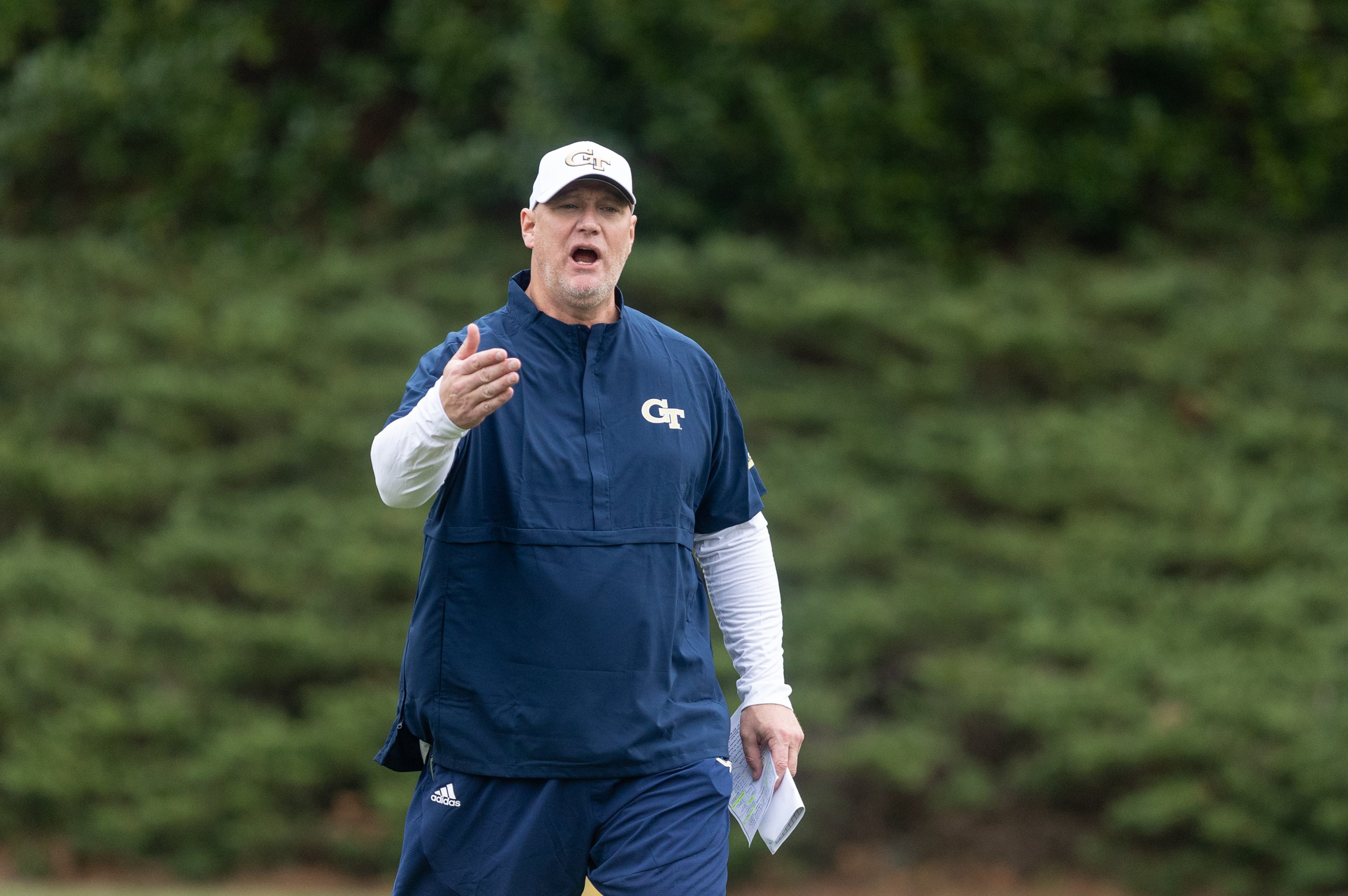Georgia Tech piling up absurd numbers in run game

It was news to quarterback TaQuon Marshall – Georgia Tech is leading FBS in rushing yards per game, and by a lot.
The Yellow Jackets’ run-game binges of late – 542 yards against Louisville, 465 against Virginia Tech and 461 against North Carolina on Saturday – have swelled the yards-per-game rate to 377 yards on the nose.
“I didn’t know,” Marshall said. “I don’t think any of the other guys know that. We just try to go out and execute. If we have 300 yards a game, 400 yards a game, then that’s what it is. As long as we have more points than them at the end of the game, I think that’s what everyone really cares about.”
Big rushing numbers are nothing new with Tech in coach Paul Johnson’s tenure. The Jackets have been in the top five in rushing yards per game nationally seven times in his first 10 seasons. They have rushed for 300 yards 72 times in Johnson’s 139 games. But Tech’s run-game production going into its matchup Saturday against Miami is still unusual. To this point, the most that the Jackets have averaged was 342.1 in 2014, a school record for the modern era. It’s been at the heart of Tech’s four wins in its past five games to improve to 5-4 and stay in the ACC Coastal race.
If Tech were to finish at 377 yards per game – which would be a hefty accomplishment, given the Jackets’ closing schedule of Miami, Virginia and Georgia plus a possible bowl game – it would be the second-highest average at the FBS level since Nebraska cranked out 392.6 yards per game in 1997 en route to a share of the national championship in coach Tom Osborne’s final season. The No. 2 rushing team – Army – is closer to 14th place than the Jackets.
Johnson’s reaction? Meh.
“We haven’t thrown the ball much, and therefore you’re going to run it more,” Johnson said. “When we haven’t gotten penalties and stopped ourselves, we’ve been pretty efficient running the ball. It’s kind of the nature of the beast. It’s kind of what you do.”
His successor at Navy, Ken Niumatalolo, has seen the Jackets a few times and been more enthused.
“Paul’s had a lot of good offenses down there, but this is one of his better ones,” he said. “They look really good upfront. It looks like they’re executing really well.”
Tech’s rushing prowess is such that, against North Carolina, Johnson was not happy with the play in the “guard box” – guards Parker Braun and Connor Hansen, later replaced by Brad Morgan, and center Kenny Cooper – and also his failure to help them in-game, and yet the Jackets still hammered the Tar Heels for 461 rushing yards.
The rushing total is higher in no small part because the Jackets are rushing the ball more. Tech is averaging 61.1 rushes per game, the most in Johnson’s tenure. The run/pass ratio is 86/14, also the most one-sided. But, despite that emphasis, the Jackets’ yards-per-carry average (6.2) is on pace to set the school’s modern-era record (6.06, 2014).
“It’s kind of interesting to me,” Niumatalolo said. “Coach has been in that league all those years and this is one of his better years against people that have seen him for several years. It’s impressive what they’re doing.”
Johnson said Tuesday that his team hasn’t thrown much because there hasn’t been a need. The run was working so well in games against Louisville and Virginia Tech, for example, that he didn’t feel the need to risk an incompletion that would put the Jackets in a second- or third-and-long situation. Better to continue setting up third-and-shorts, converting first downs and consuming the clock.
Also likely tilting the Jackets to the run is how effective both Marshall and backup Tobias Oliver are at the run, and less so in the pass game. Indeed, the Johnson team with the highest run/pass ratio to this point was last year’s team, also quarterbacked by Marshall (84/16). After hammering Virginia Tech with a barrage of Oliver-led option runs to the perimeter mixed in with B-back runs up the middle, the Jackets brought a wider variety of run plays at the Tar Heels.
“I think that’s just kind of been what it’s been the last few weeks,” offensive tackle Andrew Marshall said. “We’ve been running the ball and running it well these last couple games, so if it’s working, just keep doing it.”
The closing stretch of the Hurricanes, Cavaliers, Bulldogs and a possible bowl opponent will offer a stern test of the strength of the Jackets’ run game. Last year, the Jackets ran for an average of 211.3 yards against those three teams and 343.4 against their other eight opponents.
“It was good to rush for (461 yards) and come back (from North Carolina) and know we didn’t do everything perfect,” Marshall said. “We found a way to win, which was the most important thing and I think if we just keep pushing, it can be even better numbers if we do the right stuff.”



